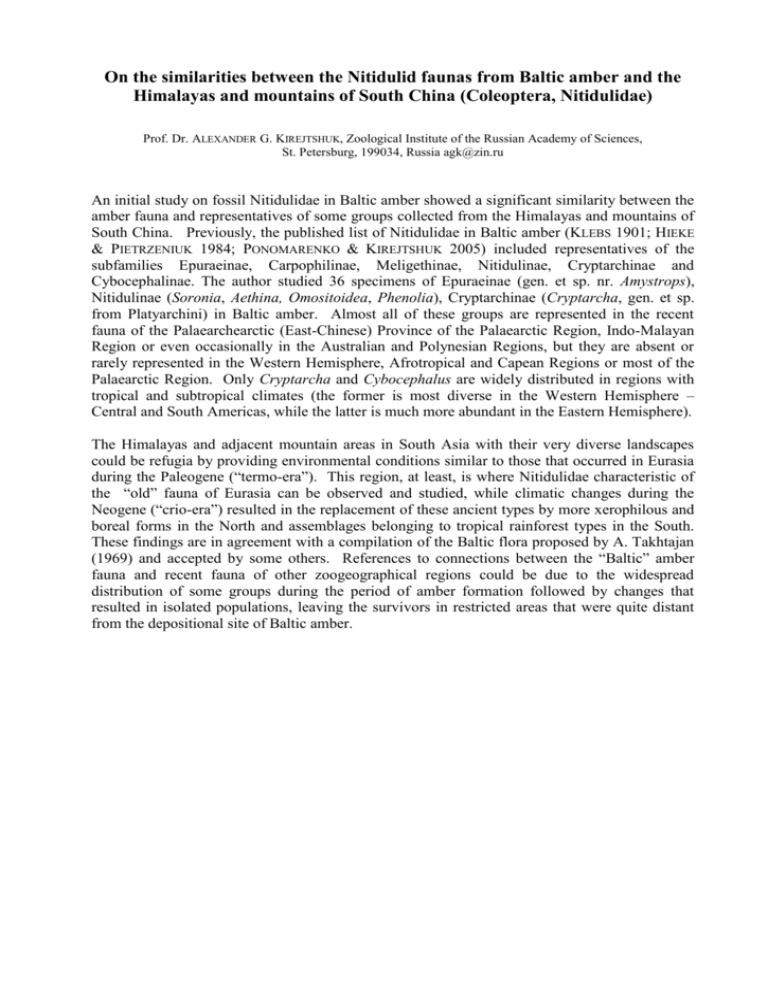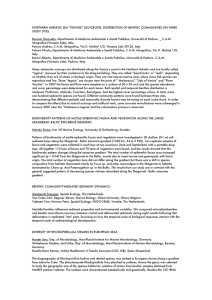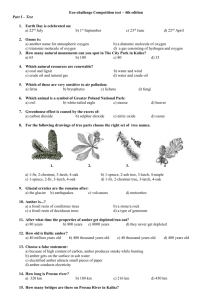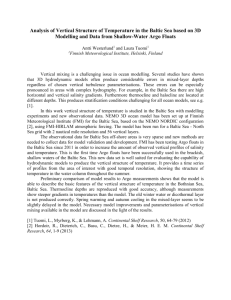On resemblance of the Nitidulid fauna from the Baltic amber and
advertisement

On the similarities between the Nitidulid faunas from Baltic amber and the Himalayas and mountains of South China (Coleoptera, Nitidulidae) Prof. Dr. ALEXANDER G. KIREJTSHUK, Zoological Institute of the Russian Academy of Sciences, St. Petersburg, 199034, Russia agk@zin.ru An initial study on fossil Nitidulidae in Baltic amber showed a significant similarity between the amber fauna and representatives of some groups collected from the Himalayas and mountains of South China. Previously, the published list of Nitidulidae in Baltic amber (KLEBS 1901; HIEKE & PIETRZENIUK 1984; PONOMARENKO & KIREJTSHUK 2005) included representatives of the subfamilies Epuraeinae, Carpophilinae, Meligethinae, Nitidulinae, Cryptarchinae and Cybocephalinae. The author studied 36 specimens of Epuraeinae (gen. et sp. nr. Amystrops), Nitidulinae (Soronia, Aethina, Omositoidea, Phenolia), Cryptarchinae (Cryptarcha, gen. et sp. from Platyarchini) in Baltic amber. Almost all of these groups are represented in the recent fauna of the Palaearchearctic (East-Chinese) Province of the Palaearctic Region, Indo-Malayan Region or even occasionally in the Australian and Polynesian Regions, but they are absent or rarely represented in the Western Hemisphere, Afrotropical and Capean Regions or most of the Palaearctic Region. Only Cryptarcha and Cybocephalus are widely distributed in regions with tropical and subtropical climates (the former is most diverse in the Western Hemisphere – Central and South Americas, while the latter is much more abundant in the Eastern Hemisphere). The Himalayas and adjacent mountain areas in South Asia with their very diverse landscapes could be refugia by providing environmental conditions similar to those that occurred in Eurasia during the Paleogene (“termo-era”). This region, at least, is where Nitidulidae characteristic of the “old” fauna of Eurasia can be observed and studied, while climatic changes during the Neogene (“crio-era”) resulted in the replacement of these ancient types by more xerophilous and boreal forms in the North and assemblages belonging to tropical rainforest types in the South. These findings are in agreement with a compilation of the Baltic flora proposed by A. Takhtajan (1969) and accepted by some others. References to connections between the “Baltic” amber fauna and recent fauna of other zoogeographical regions could be due to the widespread distribution of some groups during the period of amber formation followed by changes that resulted in isolated populations, leaving the survivors in restricted areas that were quite distant from the depositional site of Baltic amber.











